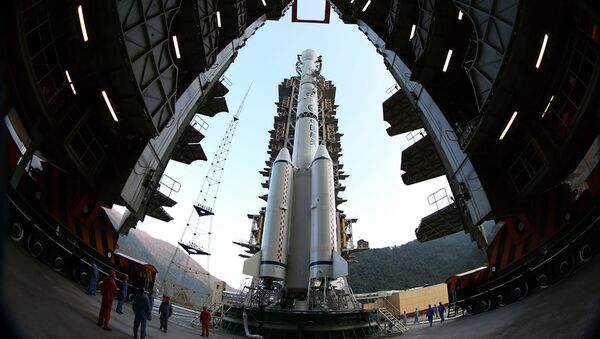China will launch a unique relay satellite to the second Earth-Moon Lagrange point, a gravitationally stable spot located a record 64,000 kilometers (40,000 miles) beyond the lunar far side.
The Queqiao probe is slated to lift off atop a Long March 4C rocket from the Xichang Satellite Launch Center in Sichuan Province on Sunday, Space.com wrote.
A Lagrange point is a location in space where the combined gravitational forces of two large bodies, such as Earth and the sun or Earth and the Moon, equal the centrifugal force felt by a much smaller third body.
The interaction of the forces creates a point of equilibrium where a spacecraft may be "parked" to make observations.
Two US ARTENMIS probes are already deployed in the area and NASA and other leading space agencies plan to build a “refueling station” there for future missions to Mars.
What makes the Queqiao probe so special is that besides the moon rovers, it will connect Earth also with other man-made landers to study the dark side of the moon.
READ MORE: China Launches Long March-5 Heavy-Lift Carrier Rocket With Shijan-18 Satellite
In addition to the Chang’e Moon rovers, China plans to launch the Chang’e 5 rover which will land on the Moon next year and bring back the first “independent” samples of lunar rock.
Because tidally locked to Earth, the Moon always shows the same face to our planet, a relay link is necessary to communicate with spacecraft on the far side, which would otherwise have to send their signals through the Moon's rocky bulk, Space.com wrote.



